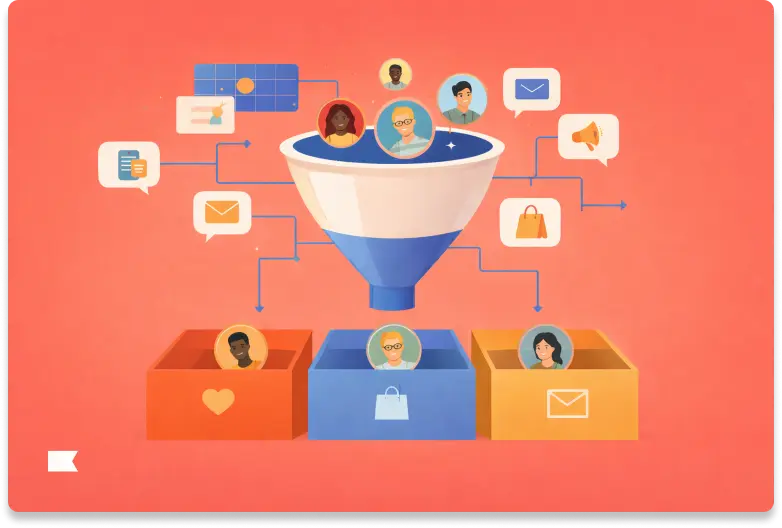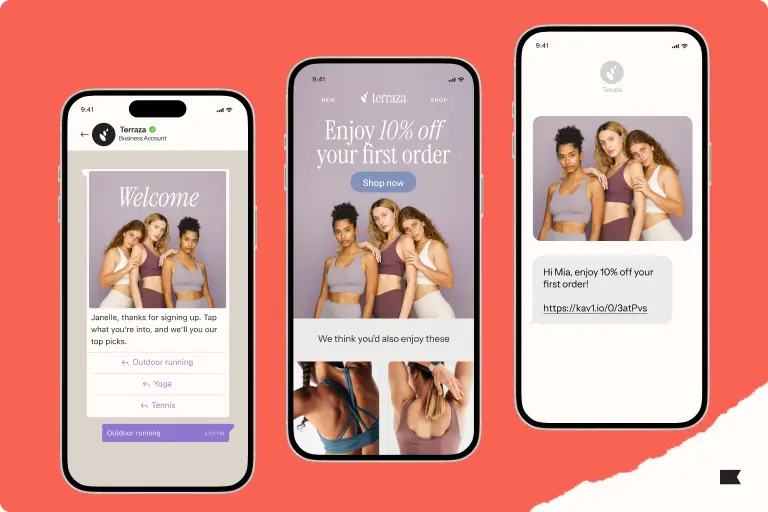Tariffs, tight margins, and the new back-to-school buyer

Back-to-school shopping is a bellwether moment for consumer sentiment—and this year, it’s ringing a little differently. Brands are navigating a volatile pricing environment, and families preparing for fall are feeling the pinch. Why? One word: tariffs.
At Klaviyo, we looked at same-site ecommerce data from thousands of US brands and retailers between January and July to get a clearer picture. The story that emerged is one of inflationary pressure, strategic adaptation, and a rising dependence on the customer you already know.
Prices are up nearly 10% for back-to-school
In July—the peak month for back-to-school spending—shoppers paid 9% more per item than they did the same time last year. This rise in prices ties directly to months of tariff uncertainty. Since spring, retailers have been navigating shifting costs, passing more of that burden to shoppers as margins tighten.
The price hike is sharpest in apparel, a core category for back-to-school. And it’s not just the average selling price (ASP) that’s rising. Order sizes are expanding too, especially for lower-priced brands that traditionally cater to budget-conscious buyers.
Why the lowest price tier is feeling the heat
Among brands with an average order value (AOV) around $70, we’ve seen order sizes increase nearly 7% since April, while ASPs for these orders rose ~10%.
That combination is unusual and telling. These brands often serve families with tight budgets, and the data shows they’re the ones bearing the brunt of pricing volatility.
Mid-tier brands (AOV $140) saw more modest AOV increases of +4%, while high-end brands ($370 AOV) saw gains of just +1%. The tariff ripple effect clearly hits the value end of the market hardest.
Fewer discounts, even in a prime shopping month
You might assume retailers would increase discounting to soften the blow of higher prices. Not so. In July—despite the dual discount events of July 4th and Prime Day—discount rates actually fell 4 percentage points year-over-year.
That’s a significant reversal from earlier in the year, when promotional activity was high. What changed?
Here’s our take: brands front-loaded promotions in April, likely to generate cash flow in advance of tariff-related cost increases. Now, in the wake of those early-season sales, many are pulling back on discounts to preserve margins.
The drop in July discounting could signal what’s ahead for peak season. Many brands may scale back promotions during BFCM, especially those still managing higher costs from tariff-related inventory shifts earlier this year.
The repeat buyer boom
Despite all this uncertainty, some brands are still growing. That growth this summer came from stronger engagement with existing customers. Brands leaned into their owned channels and saw more purchases from loyal buyers—not just a surge in net-new traffic.
Over the last 18 months, the share of orders from repeat buyers has climbed steadily, rising +3 percentage points since January and +1.5 points year-over-year. In apparel, that jump was even more dramatic: a +3 point YoY gain, much of it concentrated in July, during the back-to-school surge.
Behind the rise in repeat purchase behavior is a wave of strategic marketing. Brands are focusing more on lifecycle touchpoints, refining segmentation, and using direct channels like email and SMS to stay connected with their customer base.
In a world where acquiring a new customer is increasingly expensive, retaining one has never looked smarter.
Where growth is really coming from
Let’s talk about revenue. In July:
- Revenue from repeat buyers was up +14% YoY
- Revenue attributed to email and SMS channels was up +16%
- Within those same channels, revenue from repeat buyers surged +21%
These are powerful numbers. And they point to a future where brands win not by out-discounting the competition, but by building richer, more direct relationships with their most loyal customers.
What this means heading into fall and BFCM
If you’re a brand, especially in apparel or back-to-school categories, here are the key takeaways:
- Plan for continued cost pressure. Tariffs aren’t going away, and their impact is most acute in lower-AOV segments.
- Discounts are not the solution. Many brands are choosing margin preservation over short-term volume spikes. Expect more of that as we move into Q4.
- Double down on customer relationships. Your email and SMS programs aren’t just retention levers—they’re revenue drivers. And the data proves it.
This year, back-to-school shoppers are spending more. But they’re also rewarding brands that meet them with relevance, transparency, and value. For those that do, there’s still plenty of room to grow, even in a market reshaped by tariffs.

Related content

Discover how audience filters let you personalize every message in an omnichannel campaign using real-time data, behavior, and channel preferences.

Klaviyo welcomes Chano Fernández as Co-CEO to help accelerate global growth and lead the next era of AI-powered customer experiences.

Discover how cross-channel marketing and the rise of SMS shaped BFCM 2025. Learn why email + text orchestration drove record engagement, efficiency, and revenue.